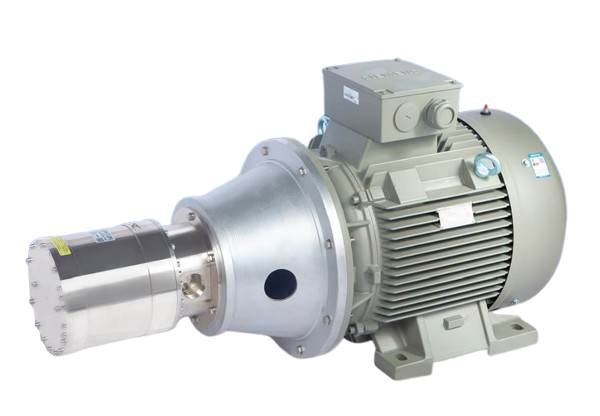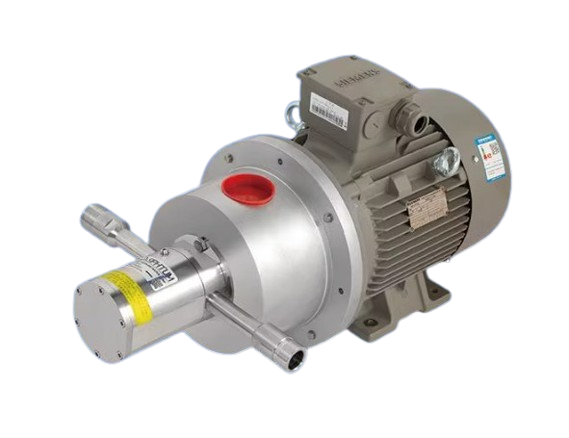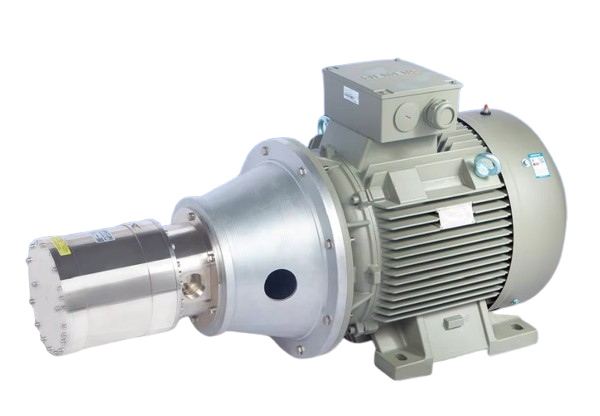Piston Pumps
- Description
- Specifications
- Comparing Pumps
- Advantages / Disadvantages
- Q&A
- Applications
- Downloads
- Drawings
- Reviews (0)
Specifications
| Specification | Details |
|---|---|
| Pump Types | Axial Piston, Radial Piston, Inline Piston, Single-Acting, Double-Acting |
| Pressure Range | Up to 700 bar (10,000 psi) for axial/radial; 10–100 bar for single/double-acting |
| Flow Rate | 0.1–500 L/min, depending on pump type and application |
| Fluid Compatibility | Water, oils, chemicals, viscous/abrasive fluids |
| Material Construction | Stainless steel, ceramic, high-strength alloys, polymer seals |
| Power Source | Electric motor, internal combustion engine, hydraulic drive |
| Operating Temperature | -20°C to 150°C, depending on materials and seals |
| Applications | Hydraulic systems, agriculture, automotive, water treatment, chemical processing, oil and gas, marine |
| Efficiency | Up to 90% for variable displacement models |
| Maintenance Requirements | Regular seal replacement, lubrication, valve cleaning, vibration monitoring |
Comparing Pumps
| Pump Type | Piston Arrangement | Key Features | Primary Applications | Advantages | Limitations |
|---|---|---|---|---|---|
| Axial Piston Pump | Pistons arranged in a circular pattern around a central shaft, moving parallel to the shaft. | High-pressure output, variable displacement options. | Hydraulic systems, mobile machinery, aerospace. | Efficient at high pressures, adjustable flow rates. | Complex design, higher cost. |
| Radial Piston Pump | Pistons positioned perpendicular to the central shaft. | Robust construction, handles high loads. | Industrial presses, heavy machinery, marine systems. | Exceptional durability, suitable for heavy-duty tasks. | Larger footprint, less compact. |
| Inline Piston Pump | Pistons aligned along a single axis. | Compact design, simpler construction. | Small-scale hydraulic systems, automotive applications. | Space-efficient, cost-effective. | Lower pressure capacity compared to axial or radial. |
| Single-Acting Piston Pump | Pistons push fluid in one direction per cycle. | Simple operation, single fluid movement per stroke. | Water pumps, low-pressure chemical dosing. | Easy to maintain, lower cost. | Lower efficiency, limited to one-directional flow. |
| Double-Acting Piston Pump | Pistons move fluid during both forward and backward strokes. | High efficiency, dual fluid movement per cycle. | High-volume fluid transfer, industrial processing. | Higher output, greater efficiency. | More complex, requires precise valve timing. |
Advantages / Disadvantages
Advantages and Disadvantages of Using a Piston Pump
Piston pumps, known for their reciprocating motion, are widely used for fluid transfer in various industries.
Below, we explore the advantages and disadvantages of piston pumps to provide a clear understanding of their benefits and limitations.
| Advantages of Piston Pumps |
|---|
| Piston pumps deliver exceptional high-pressure output, making them ideal for demanding applications like hydraulic systems and industrial machinery. Their ability to generate significant pressure ensures efficient operation in tasks requiring force, such as powering excavators or presses. Additionally, they offer precise flow control, enabling accurate dosing in chemical processing or fuel injection systems. This precision minimizes waste and enhances efficiency.Moreover, piston pumps handle a wide range of fluids, from water to viscous or abrasive liquids, showcasing their versatility. Their robust construction, often using materials like stainless steel or ceramics, ensures durability and long-term reliability, even in harsh environments. Furthermore, innovations like variable displacement and smart sensors optimize energy use and performance, aligning with modern sustainability goals. |
| Disadvantages of Piston Pumps |
|---|
| Despite their strengths, piston pumps have drawbacks. Their reciprocating motion generates vibrations, which can lead to wear and require regular maintenance to prevent breakdowns.
This maintenance, including seal replacements and lubrication, increases operational costs. Furthermore, piston pumps may not suit high-flow, low-pressure applications, where other pump types excel. |
Q&A
A piston type pump is a mechanical device that uses reciprocating pistons to transfer fluids. It operates by moving a piston within a cylinder, creating pressure changes. As the piston retracts, it generates a vacuum, drawing fluid through an inlet valve. When the piston advances, it compresses the fluid, pushing it out through an outlet valve, ensuring consistent flow.
What are the main types of piston pumps?
Piston pumps include axial, radial, inline, single-acting, and double-acting types. Axial pumps have pistons arranged around a central shaft for high-pressure tasks. Radial pumps position pistons perpendicularly for heavy-duty applications. Inline pumps align pistons for compact designs. Single-acting pumps move fluid in one stroke direction, while double-acting pumps move fluid in both directions.
What are the advantages of using piston pumps?
Piston pumps deliver high-pressure output, precise flow control, and versatility in handling various fluids, including viscous or abrasive liquids. Their durable construction ensures reliability, and innovations like variable displacement enhance efficiency, making them ideal for hydraulic systems, chemical dosing, and industrial applications.
What are the disadvantages of piston pumps?
Piston pumps generate vibrations, leading to wear and requiring regular maintenance, which increases costs. Their complex design makes them more expensive than simpler pumps. They are less suited for high-flow, low-pressure tasks and may be bulky, limiting use in compact systems.
Where are piston pumps commonly used?
Piston pumps are used in agriculture for spraying fertilizers, in automotive systems for fuel injection, in construction for hydraulic machinery like excavators, and in water treatment for fluid transfer. Their ability to handle diverse fluids and high pressures makes them vital across industries.
What materials are typically used in piston pumps?
Piston pumps are constructed from durable materials like stainless steel, ceramic, or high-strength alloys for pistons and cylinders to withstand high pressures and wear. Seals and gaskets often use rubber or synthetic polymers to ensure leak-free operation, tailored to the fluid type and application.
How do piston pumps compare to centrifugal pumps?
Piston pumps excel in high-pressure, low-flow applications and offer precise control, ideal for hydraulic systems. Centrifugal pumps, however, are better suited for high-flow, low-pressure tasks, like water circulation, but lack the precision and pressure capabilities of piston pumps.
What maintenance is required for piston pumps?
Regular maintenance includes inspecting seals and gaskets for leaks, checking pistons and cylinders for wear, and ensuring proper lubrication to reduce friction. Routine checks prevent breakdowns due to vibrations and maintain efficiency, extending the pump’s lifespan.
Can piston pumps handle abrasive or corrosive fluids?
Yes, piston pumps can manage abrasive or corrosive fluids when designed with appropriate materials, such as ceramic pistons or corrosion-resistant coatings. Specialized seals and linings further enhance compatibility, making them suitable for chemical processing or wastewater treatment.
What innovations have improved piston pump performance?
Recent advancements include variable displacement designs for adjustable flow, lightweight composites for reduced weight, and smart sensors for real-time performance monitoring. These innovations boost energy efficiency, durability, and reliability, meeting modern industrial demands.
Applications
Key Applications of Piston Type Pumps
Piston type pumps, valued for their high-pressure output and precise flow control, serve a wide range of industries.
Below are key applications of piston pumps, with each application title separated by a line for clarity.
The descriptions actively highlight how these pumps function in specific contexts, emphasizing their versatility and reliability.
| Agriculture: Fertilizer and Pesticide Spraying |
|---|
| Piston pumps deliver precise amounts of fertilizers and pesticides in agricultural settings. Farmers rely on these pumps to spray liquids evenly across crops, ensuring effective application without waste. Their ability to handle viscous fluids and maintain consistent pressure makes them ideal for sprayers, enhancing crop health and yield efficiency. |
| Automotive: Fuel Injection Systems |
| In the automotive industry, piston pumps drive fuel injection systems in internal combustion engines. They precisely meter fuel into the engine’s cylinders, ensuring optimal combustion and performance. The pumps’ high-pressure capabilities and durability support reliable operation under demanding conditions, improving vehicle efficiency and power output. |
| Construction: Hydraulic Machinery |
| Piston pumps power hydraulic systems in construction equipment like excavators, cranes, and bulldozers. They generate the high pressure needed to lift heavy loads or dig through tough materials. Their robust design ensures consistent performance in harsh environments, making them essential for large-scale construction projects. |
| Water Treatment: Fluid Transfer and Filtration |
| Water treatment plants use piston pumps to transfer fluids through filtration and purification systems. These pumps handle water and treatment chemicals with precision, ensuring clean and safe water output. Their ability to manage high pressures and corrosive fluids makes them critical for maintaining water quality standards. |
| Chemical Processing: Dosing and Mixing |
| In chemical processing, piston pumps accurately dose and mix chemicals in manufacturing processes. Their precise flow control prevents overuse, reducing waste and ensuring product consistency. The pumps’ compatibility with abrasive or viscous fluids supports applications like pharmaceutical production or specialty chemical blending. |
| Oil and Gas: High-Pressure Fluid Transfer |
| Piston pumps facilitate high-pressure fluid transfer in oil and gas operations, such as well stimulation or pipeline maintenance. Their ability to handle heavy fluids like crude oil or drilling muds ensures efficient extraction and transport, supporting the industry’s demanding operational requirements. |
| Marine: Bilge and Hydraulic Systems |
| In marine applications, piston pumps manage bilge water removal and power hydraulic systems on ships. Their durability and ability to operate in corrosive saltwater environments make them reliable for maintaining vessel functionality, ensuring safety and performance at sea. |
Downloads
Drawings
Only logged in customers who have purchased this product may leave a review.




Reviews
There are no reviews yet.